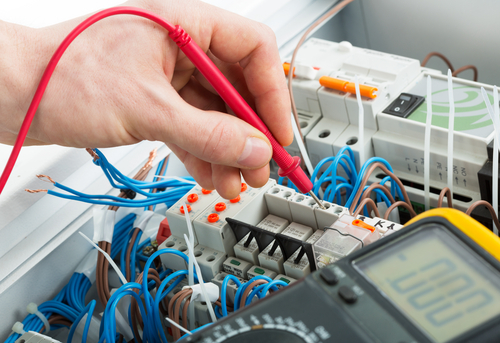Beware counterfeit products that could cause electrical accidents in the workplace. What are the most frequently counterfeited products in the world? Rolex watches? Louis Vuitton wallets? Try Viagra.
 |
In a close second place, though, and of much greater concern for workplace safety experts, are electrical products and components. More than 1 million counterfeited electrical products have been identified in recent years, according to the Electrical Safety Foundation International (ESFI).
A report prepared by the Senate Armed Services Committee found that close to 1,800 cases of suspected counterfeit parts were identified in the defense supply chain in 2009 and 2010—many of them affecting safety-critical systems. These parts may overheat, short-circuit, or fail during use, putting personnel at risk.
You need to take steps to prevent similar dangers caused by counterfeit electrical products and parts.
How Fakes Are Made
Some counterfeits are easily spotted, but others are quite convincing, looking normal on the outside but having lower-quality components or missing pieces inside.
Another way that counterfeiters make good-looking fakes is by using the manufacturer’s actual product. Workers will take legitimate parts from discarded equipment, wash them (sometimes in a river or the rain), and repackage them. Or they take a manufacturer’s discards—defective items discarded during the quality control process—and package them for sale.
Make sure your workplace and your workers are well-informed on electrical safety. Get the vital information you need in a Free Best Practices Report. To get your copy, click here
In other words, these fakes are not manufactured from scratch—they are actual manufacturer parts. They may, in fact, function when first installed, but because they have already passed their useful life, and may have been damaged, they might fail at any moment. These are sometimes called “re-labeled” products.
How to Identify a Fake
If you’re buying critical parts and components, manufacturers recommend that you protect yourself by buying from a reputable authorized dealer. However, sometimes counterfeit parts are shipped commingled with genuine ones, so even a reputable dealer may be deceived. And if you are trying to buy a discontinued part, an independent broker may be your only option.
Manufacturers offer this advice about how to be sure you get what you’re paying for:
Examine the packaging. Look for obvious discrepancies in the packaging—missing logos or logos that are not quite the right color, shape, or size; unusual layouts; or misspelled or badly edited text. Make sure shipping documents and parts numbers on the product packaging match up.
Examine the product. Make sure the product looks and feels right to you when you take it out of the package. Lay the piece alongside a known good piece and check whether they match. If anything doesn’t look right, or if you need greater assurance, an individual experienced in counterfeit detection can check the products using a microscope and some simple chemicals, like acetone. The internal configuration and components can sometimes be inspected using X rays or other imaging techniques. Some tests, like ion chromatography, can detect additional signs of tampering.
Download a free Best Practices Report on electrical safety and arc flash to make sure your workplace is safe. Find out more
Test the product. Many counterfeits are good enough to pass basic functionality tests. So for critical parts, an extended function test conducted by an independent laboratory—one that tests the product at a range of temperatures and under actual working conditions—is recommended. This is the best way to detect parts that are actual manufacturer components but were discarded because of damage or quality control failures
Visit your testing lab. Don’t select your testing lab based strictly on price; ask for detailed quotes listing the parameters tested and visit the lab to inspect its test equipment and procedures.

PingBack from http://savant7.com/workaccidentreport/workplace-safety/dont-be-shocked-identify-counterfeit-electrical-products/